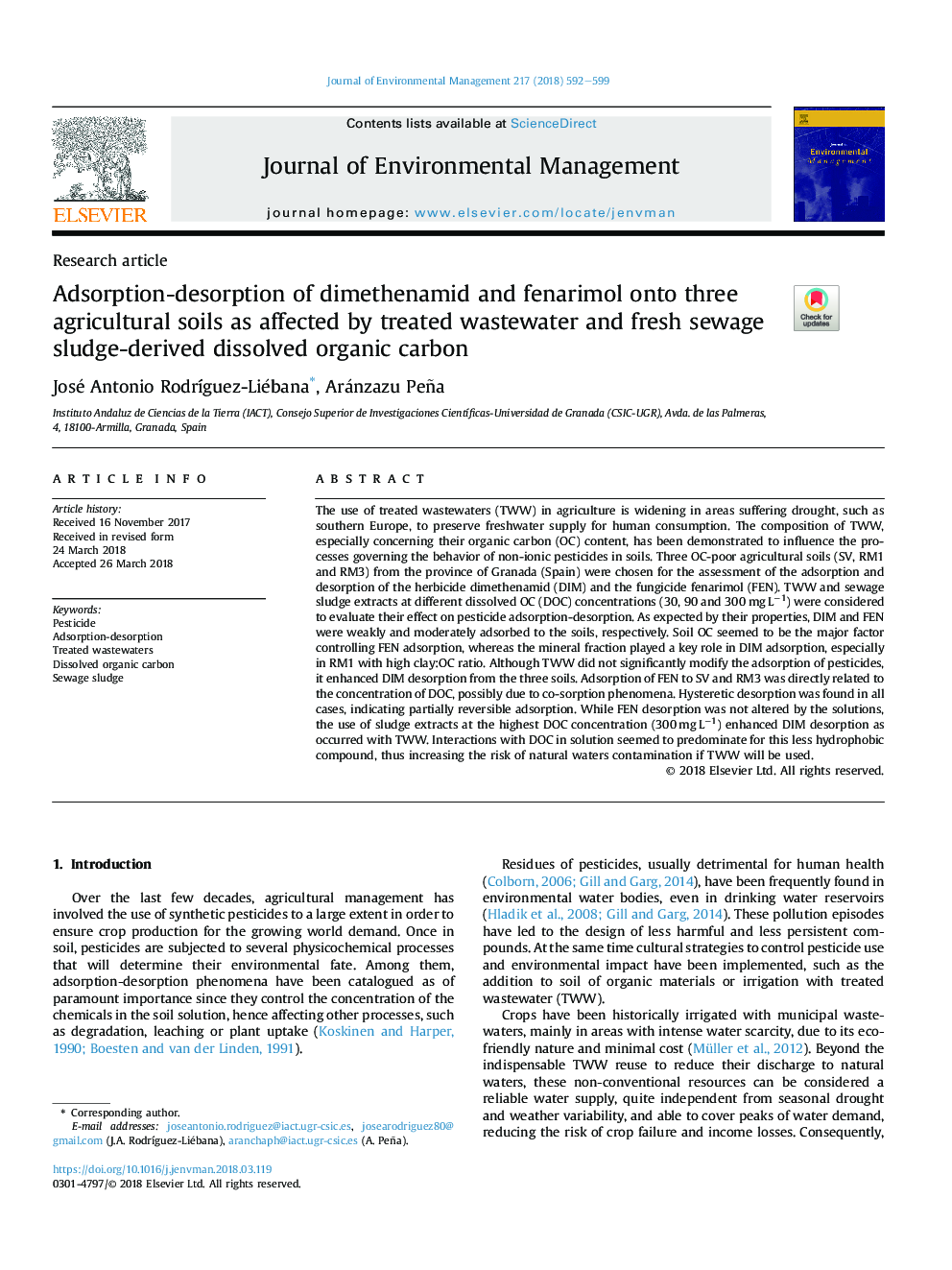| کد مقاله | کد نشریه | سال انتشار | مقاله انگلیسی | نسخه تمام متن |
|---|---|---|---|---|
| 7477578 | 1485201 | 2018 | 8 صفحه PDF | دانلود رایگان |
عنوان انگلیسی مقاله ISI
Adsorption-desorption of dimethenamid and fenarimol onto three agricultural soils as affected by treated wastewater and fresh sewage sludge-derived dissolved organic carbon
دانلود مقاله + سفارش ترجمه
دانلود مقاله ISI انگلیسی
رایگان برای ایرانیان
کلمات کلیدی
موضوعات مرتبط
مهندسی و علوم پایه
مهندسی انرژی
انرژی های تجدید پذیر، توسعه پایدار و محیط زیست
پیش نمایش صفحه اول مقاله

چکیده انگلیسی
The use of treated wastewaters (TWW) in agriculture is widening in areas suffering drought, such as southern Europe, to preserve freshwater supply for human consumption. The composition of TWW, especially concerning their organic carbon (OC) content, has been demonstrated to influence the processes governing the behavior of non-ionic pesticides in soils. Three OC-poor agricultural soils (SV, RM1 and RM3) from the province of Granada (Spain) were chosen for the assessment of the adsorption and desorption of the herbicide dimethenamid (DIM) and the fungicide fenarimol (FEN). TWW and sewage sludge extracts at different dissolved OC (DOC) concentrations (30, 90 and 300â¯mgâ¯Lâ1) were considered to evaluate their effect on pesticide adsorption-desorption. As expected by their properties, DIM and FEN were weakly and moderately adsorbed to the soils, respectively. Soil OC seemed to be the major factor controlling FEN adsorption, whereas the mineral fraction played a key role in DIM adsorption, especially in RM1 with high clay:OC ratio. Although TWW did not significantly modify the adsorption of pesticides, it enhanced DIM desorption from the three soils. Adsorption of FEN to SV and RM3 was directly related to the concentration of DOC, possibly due to co-sorption phenomena. Hysteretic desorption was found in all cases, indicating partially reversible adsorption. While FEN desorption was not altered by the solutions, the use of sludge extracts at the highest DOC concentration (300â¯mgâ¯Lâ1) enhanced DIM desorption as occurred with TWW. Interactions with DOC in solution seemed to predominate for this less hydrophobic compound, thus increasing the risk of natural waters contamination if TWW will be used.
ناشر
Database: Elsevier - ScienceDirect (ساینس دایرکت)
Journal: Journal of Environmental Management - Volume 217, 1 July 2018, Pages 592-599
Journal: Journal of Environmental Management - Volume 217, 1 July 2018, Pages 592-599
نویسندگان
José Antonio RodrÃguez-Liébana, Aránzazu Peña,